Posted by Elena del Valle on August 29, 2014
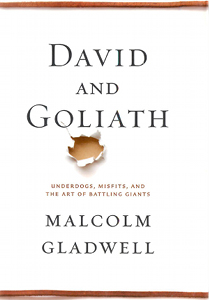
David and Goliath
Photo: Hachette Book Group
Author photo: Brooke Williams
We are impressed by size and strength, assuming giants, people or companies, should win in an encounter, according to Malcom Gladwell, a journalist and author. He believes that “much of what is beautiful and important in our world comes from adversity and struggle.”
In David and Goliath Underdogs, Misfits, and the Art of Battling Giants (Little Brown and Company, $29) he discusses how while the giants might be winners most of the time, sometimes the underdog might overcome adversity to vanquish the superpower. The 305-page hardcover book published in 2013 is divided into three main parts and nine chapters in which he explores the general theme of underdogs overcoming the odds to excel.
He explains at the beginning that facing overwhelming circumstances “produces greatness and beauty,” and that being disadvantaged in a lopsided conflict changes people, sometimes for the better. The lesson, he concludes, is that the powerful and strong are not always as we perceive them.
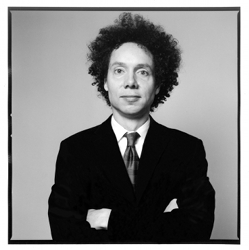
Malcolm Gladwell, author, David and Goliath
Throughout the book he uses examples to illustrate the points he wishes to make about how it is possible that a disadvantage such as dyslexia or loosing a parent at a young age may make people stronger than they might otherwise have been in the absence of the hardship. In other words, what doesn’t kill us might make us strong and able to beat a difficult situation to our favor.
Many American presidents and British prime ministers suffered the loss of a parent in their youth at a higher rate than the general population, he says. He points out that while such a loss is common among society’s losers it is also in evidence among its winners and wonders whether such a situation might become an advantage.
To research the chapter on the Troubles in Northern Ireland he spent a summer in Belfast. He was surprised to discover how small the areas in dispute, that had played a major role in British politics for three decades, were. Goliaths, he says, still win most of the time. The thing to remember is that they don’t win all of the time, and perhaps not nearly as often as we might expect them to.
Gladwell, a staff writer at The New Yorker since 1996, lives in New York. Prior to this book, he wrote What the Dog Saw, Outliers, Blink, and The Tipping Point.
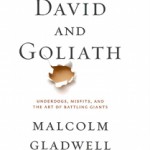
Click to buy David and Goliath
Comments:
Filed Under: Books
Posted by Elena del Valle on August 22, 2014
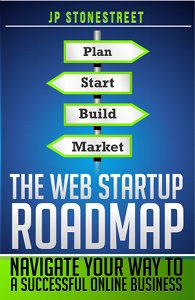
The Web Startup Roadmap
Photos: JP Stonestreet
After selling two websites in 2008, JP Stonestreet wrote The Web Startup Roadmap: Navigate Your Way to a Successful Online Business (Ripen Publishing, $22.95) to share his ideas about building an online business from scratch, marketing, running and preparing it for possible sale.
“The biggest challenge was the actual writing of the book. It’s over 300 pages! I had no idea it would be that long when I started writing it. If I had it to do over again, I’d split it up into 3 different books that are much shorter. Readers like smaller books better, too. Especially when the content is challenging,” Stonestreet said by email in response to a question about the challenge of writing the book.
An understanding of a small target audience is necessary at the beginning, he says in the book. Once your idea proves successful you can expand your audience. He lists several examples of companies that started targeting a niche audience and grew their audience over time.
When asked who his book audience is he said, “I wrote this book for non-technical people who want to start an online business or expand their current online presence but aren’t sure what to do or even where to start. The web is accessible to everyone, but understood by very few in comparison. My goal was to lift the veil and help more business owners understand how they can use it to build and grow their businesses.”
A good idea that is well developed is also necessary, as is offering something that sets you apart from competitors, he says, describing traits successful start-ups share.
In the book, he discusses business models he believes work online. The 300-page softcover book, published in 2012, is divided into five sections: Planning for Success, Starting Your Startup, Building Your Website, Marketing Your Website, and Running Your Business. In the third one he outlines his ideas about web business essentials.

JP Stonestreet, author, The Web Startup Roadmap
For him, “The biggest takeaway from publishing the book was to start promoting it before you even start writing it. After I sold my company, I wanted to document all the lessons I learned so I’d remember them. After writing pages and pages of notes, I decided to put them in a book, which led to The Web Startup Roadmap. Unfortunately, I didn’t think to promote it until it was written and published so I missed out on a lot of opportunities to raise awareness and attract press coverage. The lesson I share with everyone is to start promoting your book on social media and to your following as soon as you get the idea and the title.”
In the final two sections, he discusses marketing strategies such as affiliate marketing, advertising, social media, emails and search engine optimization; and the aspects of growing the business beyond the initial stages toward an eventual sale.
The biggest takeaway for readers? “The first section of the book discusses my long list of failures and the lessons I learned from them. If readers only take one lesson from the book, it should be the value of perseverance. Failure is inevitable if you’re a risk taker, but success is inevitable if you don’t let failure stop you from trying,” the author said.
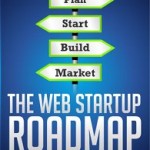
Click to buy The Web Startup Roadmap
Comments:
Filed Under: Books
Posted by Elena del Valle on August 18, 2014
The S. I. Newhouse School of Public Communications at Syracuse University invites applications for a tenure-track/tenured faculty position in Public Relations (PR) to begin in August 2015. Position rank is negotiable. This professor will provide leadership in our specialized M.S. in PR with a focus on public diplomacy, in partnership Read the entire ad here Syracuse University Tenured/Tenure-track Professor in Public Relations
Posted by Elena del Valle on August 13, 2014
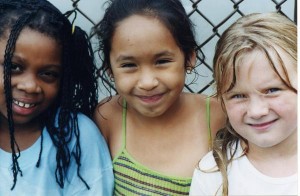
Photo: U.S. Census Bureau, Public Information Office (PIO)
Unsure about your race or ethnicity? You’re not alone. Almost 10 million (9.8 million) people varied their ethnicity responses between the 2000 and the 2010 censuses. That represents 6 percent of the population of 168 million who changed their minds about their identity between the two national demographic surveys, according to Preliminary Results from America’s Churning Races: Race and Ethnic Response Changes Between Census 2000 and the 2010 Census.
The shift may be explained at least in part due to questionnaire design changes, the report indicates. Analysts observed a race response change among American Indians, Alaska Natives, Native Hawaiians and Other Pacific Islanders, people who reported multiple races, and Hispanics who reported a race. The researchers found little variation among single race non Hispanic whites, blacks, and Asians.
“Compared to adults, children and adolescents may be more likely to change their race/Hispanic responses for two reasons: childhood and adolescence are times of personal identity development and young people’s information was probably reported by their parents in 2000 but may be self-reported in 2010,” researchers said.
The most common change in responses was from Some Other Race (SOR) to single race white among those who identified (or were identified by someone in the household) as Hispanic in both the 2000 and the 2010 censuses. The second most common response change was from single race white to SOR for those who reported (or were reported as) Hispanic in the two censuses.
Specifically, 710,019 respondents changed from white to Hispanic white, and 417,855 changed from Hispanic white to white between one census and the next, according to an Associated Press article (10 million switched ethnicity or race ID on census forms by Jesse J. Holland). Races in the Census are white; black or African American; American Indian or Alaska Native; Asian; Native Hawaiian or Other Pacific Islander; and other for those with more than one race. In addition, there is a Hispanic ethnic category. The article also pointed to people who were children and or living in the West when the 2000 Census took place as the most likely to have modified their responses between the government surveys.
The paper was authored by Sonya Rastogi, PhD, Senior Researcher, Center for Administrative Records Research and Applications (CARRA), Carolyn Liebler, PhD, Assistant Professor of Sociology, University of Minnesota, Leticia Fernandez, PhD, Researcher, CARRA, and James Noon, Researcher, CARR.
Posted by Elena del Valle on August 8, 2014
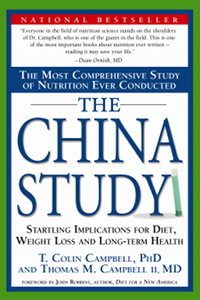
The China Study
Photos: BenBella Books, Inc.
A good diet is one of the most important ways to achieve and maintain optimum health, say T. Colin Campbel, Ph.D. and Thomas M. Campbell II, M.D. In The China Study Startling Implications for Diet, Weight Loss and Long-Term Health (BenBella Books, $16.95), published in 2006, and the Spanish language edition El Estudio de China Efectos Asombrosos de la Dieta, la Pérdid ade Peso y la Salud a Largo Plazo (BenBella Books, $17.95), published in 2012, the father discusses his reasoning and the data he relied on to reach his conclusions. He points out that despite spending more per person on health care than any other country the United States is struggling with the health of its citizenry.
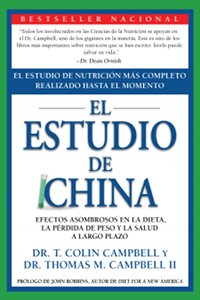
El Estudio de China
Obesity, diabetes, cardiac disease, high cholesterol, and cancer are among the best known signs of trouble. They and other illnesses lead half of Americans to take prescription medications every week, Colin Campbell explains in the Introduction. The 419-page softcover book, (481 pages in the Spanish edition) is divided into four main sections: The China Study, Diseases of Affluence, The Good Nutrition Guide, and Why Haven’t You Heard This Before?
As director of a comprehensive study of diet, lifestyle and disease Colin Campbell learned that the people who got the most chronic diseases were the ones who ate the most animal products. He went on to discover that the effects of such diseases could be reversed with a healthy diet. He was surprised to discover the level of confusion that exists due to misinformation.
Based on his many decades of diet and health research he has become convinced that heart disease can be prevented and even reversed without surgery or drugs. Eating the right foods is the secret, he believes.
In Appendix C, he discusses the role of vitamin D in health, pointing out that people living in places with low sunshine are more prone to certain diseases such as type 1 diabetes, multiple sclerosis, rheumatoid arthritis, osteoporosis, and breast, colon and prostate cancer. One quarter of the amount of sunshine needed to produce a slight redness to your skin, two to three times a week, will produce and store the necessary amount of vitamin D, according to the author. An excess of animal protein which create an acidic blood environment can affect the vitamin D process in the body, he points out.
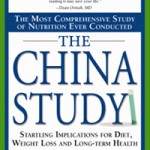
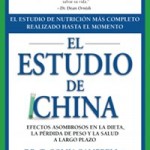
Click to buy El Estudio de China
Comments:
Filed Under: Books
Posted by Elena del Valle on August 1, 2014
UC Davis Health System
Sacramento, California
An immediate opening exists for an Associate Vice Chancellor for Strategic Communications and Marketing for the UC Davis Health System. Located in Sacramento, California, the UC Davis Health System is comprised of an award winning 600+ bed academic medical center, an integrated physician network, Click here to read the entire ad Associate Vice Chancellor for Strategic Communications and Marketing
Posted by Elena del Valle on August 1, 2014
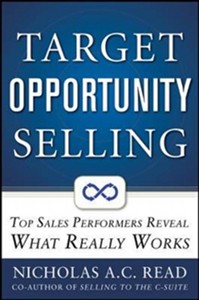
Target Opportunity Selling
Photo: McGraw-Hill
In Target Opportunity Selling: Top Sales Performers Reveal What Really Works (McGraw-Hill, $28), Nicholas A.C. Read, author of Selling to the C-Suite, outlines the strategies he believes are successful for top corporate sellers. Read begins by introducing a model, The Sales Expansion Loop, which he says assigns Marketing, Sales, Management, and Service roles for targeting sales opportunities throughout the stages of a long-lead sale.
He based the Sales Expansion Loop on first hand interviews with hundreds of sales professionals around the world. His recommendations are based on 20,000 hours with business to business sellers in companies of various sizes and diverse locations, according to the book.
The 316-page hardcover, book published this year, is divided into 15 chapters: Beyond the Sales Funnel, Research, Contact, Precision Questions, Qualify Their Interest, Qualify Your Seat at the Table, Qualify Your Ability to Win, Social Capital, Find the Influencers, Align To Key Stakeholders, Sell Your Solution, Form A Competitive Strategy, Establish Your Proof, Compete on Value, and Closing and Opening.
In the final chapter, the author recommends that sellers get together with their customers to create a report of sorts in which they address after the sale issues, measurement and results. He also mentions that sellers request testimonials from happy customers, take their pictures and display them. He says “Top sellers collect case studies and reference stories like trophies…”
Read, former executive director at Ernst & Young, is the founder and managing partner of the SalesLabs. He is a speaker, consultant, and columnist.
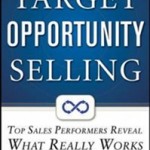
Click to buy Target Opportunity Selling
Comments:
Filed Under: Books






















